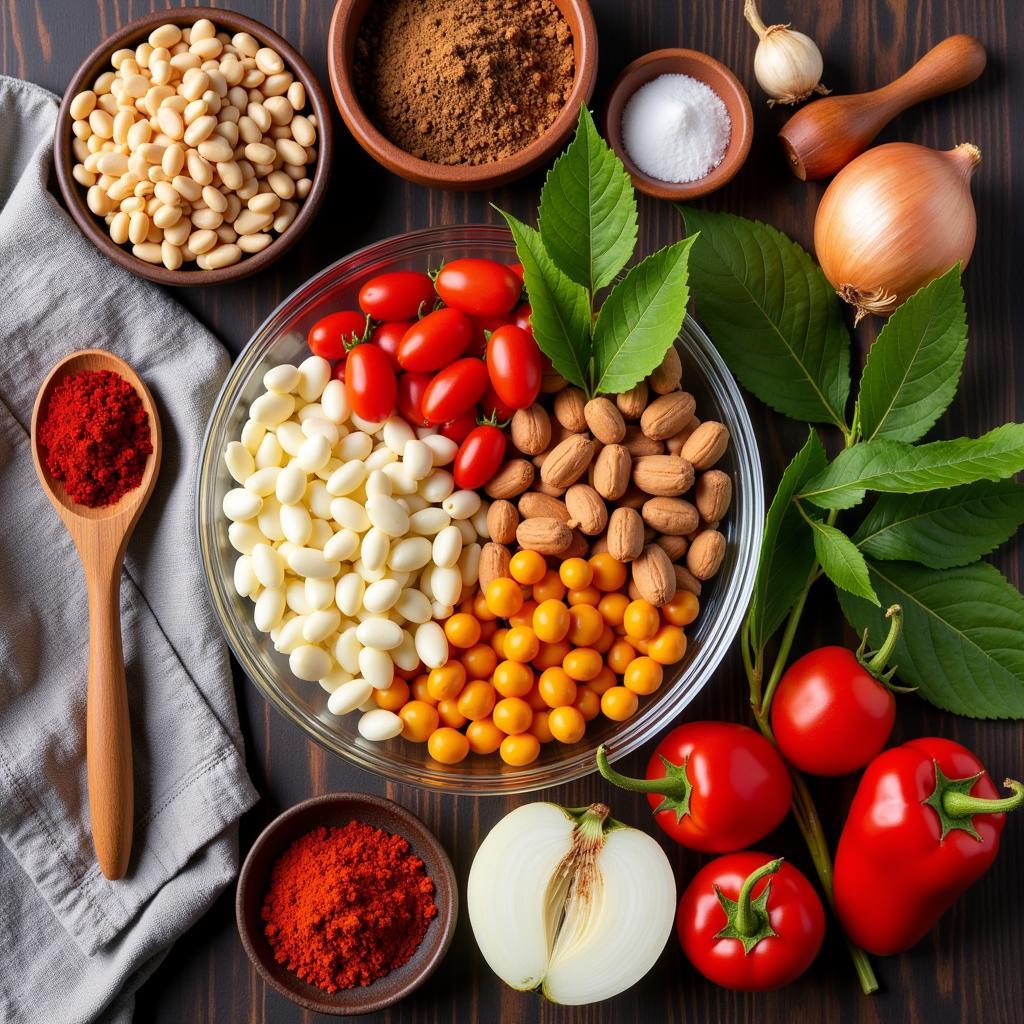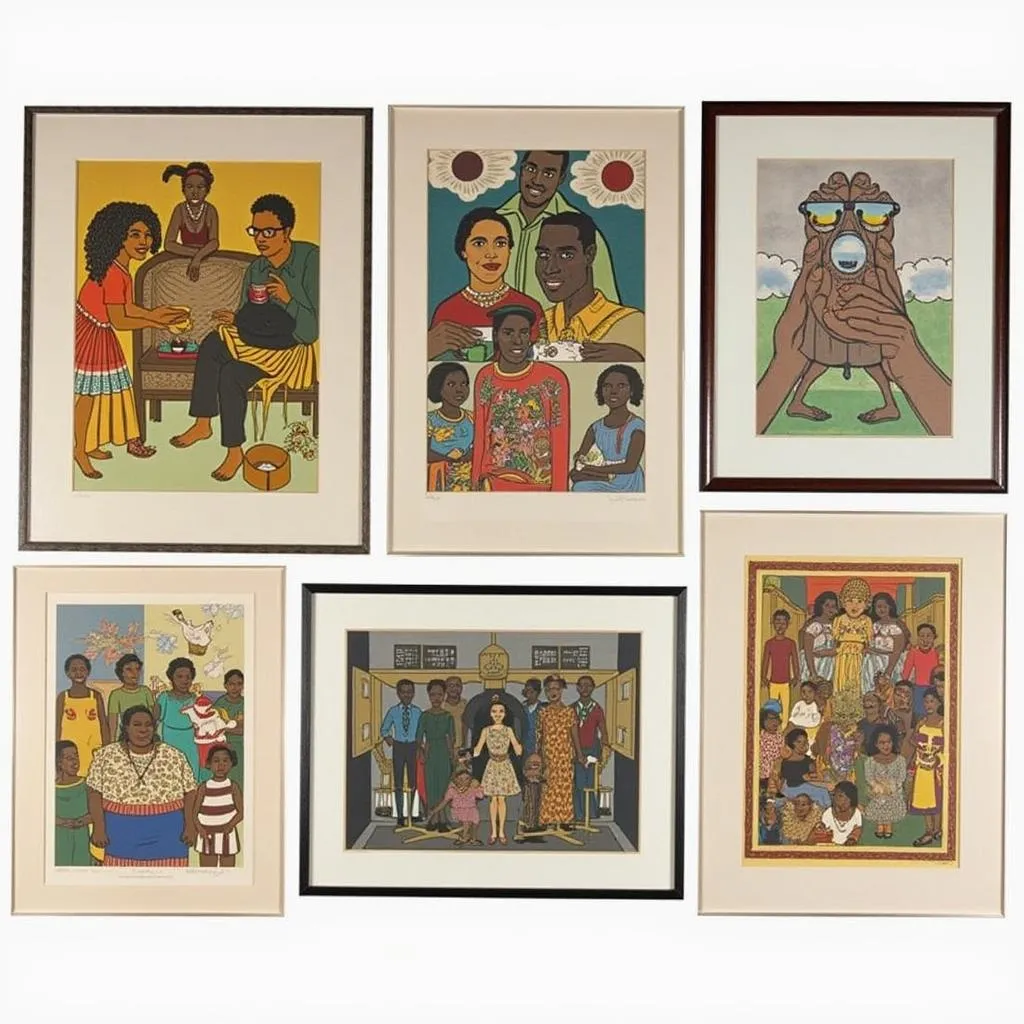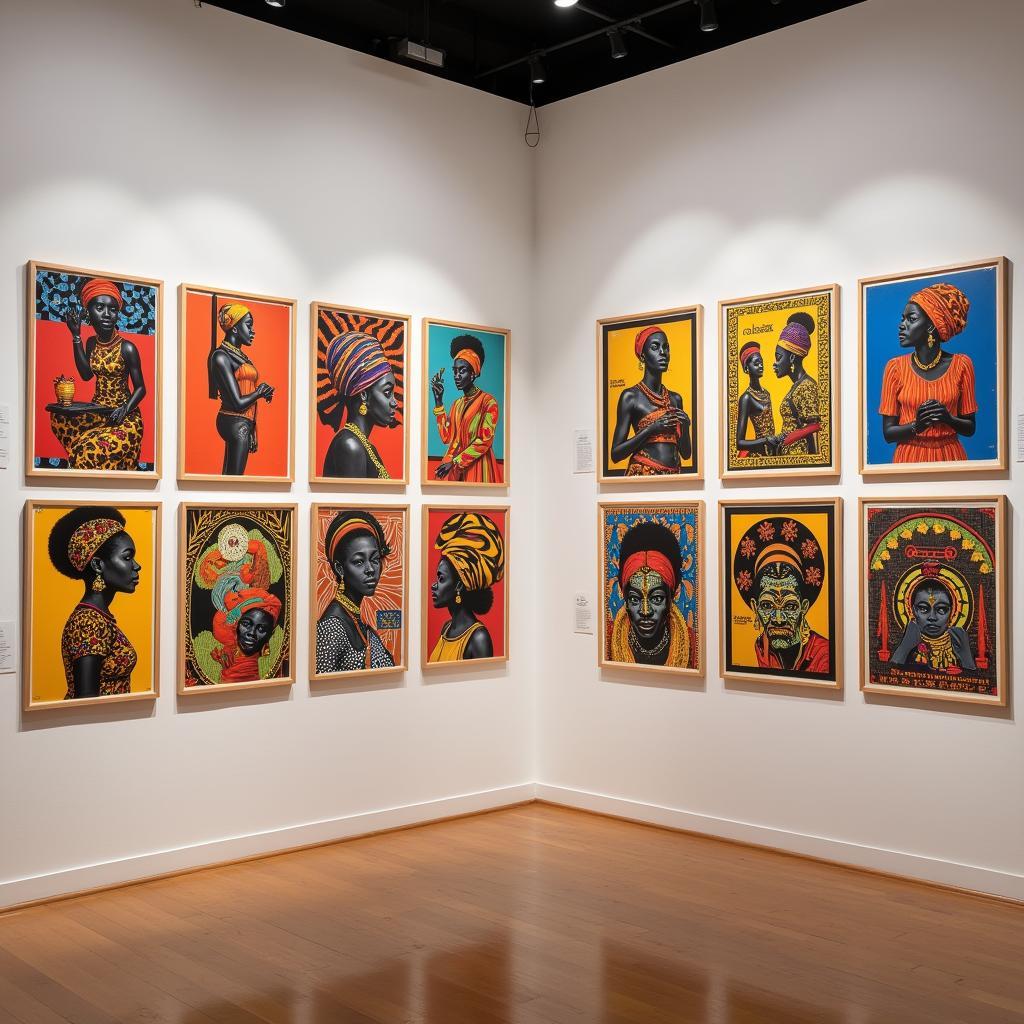Exploring the Delights of African Bean Soup
African Bean Soup is more than just a simple dish; it’s a culinary journey through the diverse landscapes and cultures of the African continent. From the spicy West African peanut stew to the hearty East African maharagwe, each bowl tells a story of tradition, resourcefulness, and the deep connection between food and community. This article dives deep into the world of African bean soups, exploring their rich history, diverse ingredients, and the cultural significance they hold.
Bean soups are a staple across Africa, providing a nutritious and affordable source of protein for millions. Their versatility allows for endless variations, incorporating local ingredients and spices to create unique flavor profiles. Whether simmered over an open fire in a rural village or prepared in a modern kitchen, African bean soups offer a comforting and flavorful experience that transcends borders and generations. You might also be interested in other African food recipes.
A Culinary Tapestry: Regional Variations of African Bean Soup
The beauty of African bean soup lies in its adaptability. Each region boasts its own signature version, reflecting the local climate, available ingredients, and culinary traditions.
West African Peanut Stew
This rich and creamy stew, often featuring sweet potatoes and chicken or beef, is a testament to the West African love for bold flavors. The addition of peanuts creates a smooth, nutty texture that complements the savory spices.
East African Maharagwe
Maharagwe, a Swahili word for bean stew, is a hearty and flavorful dish often made with kidney beans, coconut milk, and a blend of aromatic spices. It is a popular accompaniment to rice or ugali, a type of cornmeal porridge.
North African Chickpea Soup
In North Africa, chickpeas take center stage, simmered with fragrant spices like cumin, coriander, and turmeric. This comforting soup is often served with crusty bread, perfect for soaking up the flavorful broth.
Southern African Chakalaka
Chakalaka is a vibrant and spicy relish made with beans, vegetables, and a blend of chilies. Although not a soup in the traditional sense, it is often served alongside other dishes, adding a burst of flavor and heat. For those seeking healthier options, you may want to check out African foods that help lose weight.
The Nutritional Powerhouse: Health Benefits of African Bean Soup
Beyond their delicious taste, African bean soups are packed with essential nutrients. Beans are a fantastic source of protein, fiber, iron, and various vitamins and minerals. These nutrients contribute to overall health, promoting digestive health, boosting energy levels, and supporting a strong immune system.
Protein for Growth and Repair
Beans are an excellent source of plant-based protein, crucial for building and repairing tissues in the body. This makes them a particularly valuable food source in regions where meat may be less accessible.
Fiber for Digestive Wellness
The high fiber content in beans promotes healthy digestion, preventing constipation and supporting a healthy gut microbiome. Fiber also helps regulate blood sugar levels and can contribute to weight management. You can explore more options by searching for African cuisine London.
From Field to Bowl: Preparing Your Own African Bean Soup
Making African bean soup at home is a rewarding experience. While the specific ingredients and methods vary depending on the recipe, the basic process involves soaking the beans, sautéing aromatics, simmering the beans until tender, and adding spices and other ingredients to create the desired flavor profile.
Soaking the Beans: A Crucial Step
Soaking dried beans overnight helps to reduce cooking time and improve digestibility. It also helps to remove some of the compounds that can cause gas.
Building Layers of Flavor
The key to a flavorful African bean soup lies in building layers of flavor. Start by sautéing onions, garlic, and other aromatics to create a fragrant base. Then, add spices and other ingredients gradually, allowing the flavors to meld and develop. Discover African food distributors in Texas for authentic ingredients.
 Variety of Ingredients for African Bean Soup
Variety of Ingredients for African Bean Soup
Conclusion: A Taste of Africa in Every Spoonful
African bean soup is more than just a meal; it is a celebration of culture, a testament to resourcefulness, and a source of nourishment for body and soul. From the vibrant spices of West Africa to the hearty flavors of East Africa, each bowl tells a unique story. So, embark on a culinary adventure and experience the delights of African bean soup for yourself. You might also find it helpful to browse through African food pictures for inspiration.
FAQ:
-
What type of beans are commonly used in African bean soup? Various beans are used, including black-eyed peas, kidney beans, pinto beans, and chickpeas.
-
Is African bean soup spicy? The level of spice varies depending on the region and recipe. Some soups are mild, while others are quite fiery.
-
What are some common accompaniments to African bean soup? Rice, ugali (cornmeal porridge), fufu (mashed plantains or cassava), and crusty bread are popular choices.
-
Can I make African bean soup in a slow cooker? Yes, a slow cooker is a great option for making African bean soup.
-
How long can I store leftover African bean soup? Leftover soup can be stored in the refrigerator for up to 3-4 days.
Need further assistance? Contact us at Phone: +255768904061, Email: kaka.mag@gmail.com or visit our address: Mbarali DC Mawindi, Kangaga, Tanzania. Our customer service team is available 24/7.


